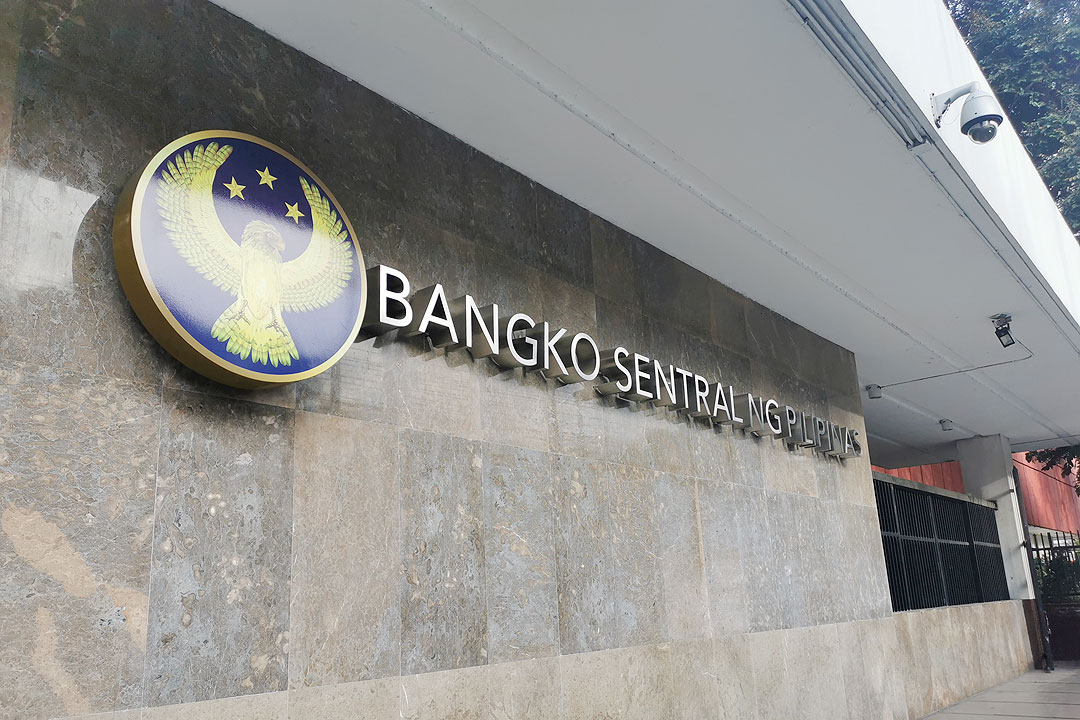
By Keisha B. Ta-asan, Reporter
THE BANGKO SENTRAL ng Pilipinas (BSP) still has room for one more rate hike at its meeting later this month to quell persistently elevated core inflation, before keeping rates on hold for the rest of the year, S&P Global Ratings said on Tuesday.
“We think there’s space for at least one more rate hike, and then a prolonged hold for the rest of the year from the BSP, given that the core inflation is still very high,” S&P Senior Economist and Associate Director for Credit Market Research Vincent Conti said at an online webinar.
Mr. Conti said the BSP may only start cutting interest rates by next year, in line with their policy forecasts for the US Federal Reserve. The Fed has raised rates by 500 basis points (bps) to 5-5.25% since last year.
For its part, the BSP has hiked the benchmark interest rate by 425 basis points (bps) to 6.25%, the highest in nearly 16 years.
While headline inflation eased to 6.6% in April, core inflation remains stubbornly high. Core inflation, which discounts volatile prices of food and fuel, slowed to 7.9% in April from 8% in March. Year to date, core inflation averaged 7.8%.
Mr. Conti said the negative impact of higher borrowing costs on economic growth will linger if the BSP further tightens its policy settings.
“The pass-through of interest rates to the growth rate of the economy tends to have long and variable lags, especially for the Philippines,” he said.
The credit watcher currently projects the Philippine economy to expand by 5.8% this year, lower than the government’s 6-7% growth target. In 2022, the economy grew by 7.6%.
Mr. Conti said pent-up demand may start to wane this year as elevated inflation and high interest rates dampen household consumption.
Inflation averaged 7.9% in the first four months of the year, still above the BSP’s 6% full-year target for 2023.
On the other hand, high interest rates and slower economic growth may help stabilize the foreign exchange (FX) rate.
“Holding down domestic growth rates helps control the size of the current account deficit. Not having that much of a difference in yield differential between the US will also help stabilize the FX rate,” Mr. Conti said.
Based on BSP data, the current account deficit was at $17.8 billion last year, significantly wider than the $5.9-billion shortfall in 2021.
The peso closed at P55.76 versus the dollar on Tuesday, down by 51 centavos from Monday’s P55.25 finish, data from the Bankers Association of the Philippines’ website showed.
BANKING OUTLOOK
Meanwhile, Philippine bank lending growth may slow down to 7-9% this year from the 12% growth in 2022 due to high interest rates, S&P Global Ratings said.
At the same online webinar, S&P Associate Director Nikita Anand said consumer loans, which make up 20% of total loans, are vulnerable to high borrowing costs.
“The high inflation and high interest rates really erode household savings, putting a strain on low-income households. Credit cards, and unsecured personal loans could be most at risk,” he said.
Central bank data showed outstanding loans by big banks rose by 10.1% to $10.762 trillion in March from $9.77 trillion a year earlier. This was the fastest growth in bank lending in two months and ended three straight months of slower credit growth.
Elevated inflation and interest rates will also weigh on banks’ asset quality, according to Ms. Anand. But the deterioration is likely to be only marginal and limited to consumers and small businesses.
“We expect NPLs (nonperforming loans) and performing restructured loans in combination will stay under 6% of total sector loans. Bank profitability could continue to improve with return on assets of about 1.5%,” Ms. Anand said.
The banking industry’s NPL ratio went up to 3.31% in January from 3.28% a month earlier.
Data from the BSP showed that bad loans reached P411.186 billion in February, up by 1.5% from P405.138 billion in January.
“Although funding costs will increase, we believe the pass through of a higher policy rate is likely to widen net interest margins by about 20 basis points. So net interest margin improvements will in a way mitigate the impact of lower loan growth,” Ms. Anand said.
She cited some risks to S&P’s banking sector outlook, such as a sharper than expected economic slowdown in the Philippines, persistently high inflation, and future stresses in the corporate sector.
BSP has room for one more rate hike — S&P
Source: Bantay Radio
0 Comments